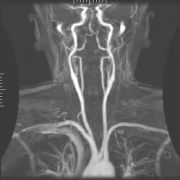The contrast material used for MRI imaging can be problematic for kidney patients but for other patients can be useful in disease monitoring
 Chuck Norris is known as an action actor who has played in many films, but in 2017 he made headlines following a $10 million lawsuit that he and his wife filed against several manufacturers of gadolinium-based contrast agents (GBCAs - gadolinium-based contrast agents), the contrast agent which is injected in MRI scans. His wife had to undergo several MRI scans to assess damage to her joints due to arthritis that she contracted and according to Norris and his wife, she was poisoned by what is called GDD - Gadolinium Deposition Disease and therefore suffers from pain and burning sensations in her body organs. About a month after the lawsuit, the FDA (American Food and Drug Administration) published a warning about gadolinium-based contrast agents, but in the process also calmed down and claimed that although gadolinium accumulates in the brain and body (in bones and vital organs), it was not found, as of the publication of the warning, that it causes health effects Negativity in patients with normal renal function, so the benefit outweighs the risk.
Chuck Norris is known as an action actor who has played in many films, but in 2017 he made headlines following a $10 million lawsuit that he and his wife filed against several manufacturers of gadolinium-based contrast agents (GBCAs - gadolinium-based contrast agents), the contrast agent which is injected in MRI scans. His wife had to undergo several MRI scans to assess damage to her joints due to arthritis that she contracted and according to Norris and his wife, she was poisoned by what is called GDD - Gadolinium Deposition Disease and therefore suffers from pain and burning sensations in her body organs. About a month after the lawsuit, the FDA (American Food and Drug Administration) published a warning about gadolinium-based contrast agents, but in the process also calmed down and claimed that although gadolinium accumulates in the brain and body (in bones and vital organs), it was not found, as of the publication of the warning, that it causes health effects Negativity in patients with normal renal function, so the benefit outweighs the risk.
in an opinion article Published at the end of July 2019 in MedPage Today, the author (Howard Wolinsky) discusses the consequences of gadolinium deposition in the brain and body when many MRI scans are needed as part of oncological surveillance (Active Surveillance), such as in the surveillance of prostate cancer patients. Follow-up with the help of MRI tests is common in many oncological diseases, for prevention and in other diseases such as multiple sclerosis and more.
Until a few years ago, no one was concerned, so how did the whole thing start?
Several studies previously reported that very small amounts of gadolinium were found in brain tests of patients who died and were operated on, which was probably caused by the leakage of gadolinium from the blood vessels to the body's organs after the injection, but no health consequences were found. However, after further consultation and examination, steps were taken by the health authorities to reduce exposure to gadolinium-based contrast agents (it is important to note that the actual amount of gadolinium in the contrast agent is very low - A.B.H.) and to prevent injections in scans where contrast agent injection is not necessary.
The only connection between the effects of gadolinium-based contrast material and health problems was found in 2006, when it was discovered that in patients with poor kidney function, a rare and serious disease called nephrogenic systemic fibrosis, a disease in which fibrosis (scar-like thickening) occurs in the skin and internal organs of the body (this is why respondents are tested before entering an MRI scan, as happens before a CT scan, as to their renal function before deciding on a gadolinium injection - A.B.H.).
In the opinion article, it is suggested to implement this advice in the context of prostate cancer monitoring in accordance withGlyxone index (an index used to grade the severity of prostate cancer). For example, in prostate cancer patients with a Gleason index of 6 points, there is no point in injecting gadolinium, which is more effective in identifying a disease with a Gleason index of 3+4. Another suggestion is to complete an MRI with contrast material in all patients with prostate cancer as a baseline test, and if a follow-up test is offered, in patients with a Gleason index of 6, gadolinium can be avoided.
The author of the article: Ofer Ben Horin, who has about 20 years of experience in applications, drug research and training in the field of MRI.
Author of the bookMRI the complete guide-medicine and physics meetOn the website www.mriguide.co.il
Link to the opinion article regarding the sinking of the Gadolinium - medpagetoday website
Gadolinium- is it dangerous for us? - MRI site the complete guide

One response
There is a huge difference between the two types of gadolinium compound, one linear (straight molecule) and the other macrocyclic (circular molecule). In a study on animals, they found that the residues in the brain and skin from the linear compound are up to 100 times the residues from the macrocyclic compound (zero for short). In humans they also found findings in a similar direction. In Assuta Ramat Hay'al they use dotarem which is a macrocyclic compound. I need to pass such a test and I would not be ready if it was from the linear compound.